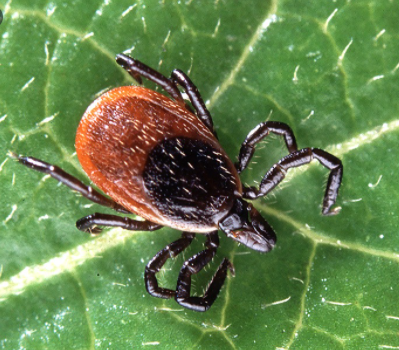THUNDER BAY — The past several years have seen new invasive species spread into the Thunder Bay area as well as a notable increase in the number of those who have been here for some time.
That’s according to longtime entomologist Ken Deacon, who continues to observe and collect data on a number of insects and arthropods in Thunder Bay and the surrounding area. However, one species currently getting attention in southern parts of the province called the hammerhead (or shovelhead) worm, would likely have a much harder time getting a foothold here, he said.
“I think, unlike the ticks that have invaded over the last 20 years, I think these guys are probably going to find conditions pretty harsh here,” Deacon said in an interview with Newswatch.
The hammerhead worm is raising concerns over its confirmed introduction to, and spread across, southern Ontario. The brightly-coloured predatory worm, which originated in Asia, regenerates when cut into pieces, Deacon said, adding that it is toxic. According to the Hamilton Conservation Authority, touching them can irritate skin and eyes and it advises people not to handle them.
Deacon said he hasn’t yet received any reports of the hammerhead in the Thunder Bay area. And while he said it’s unlikely they’d reliably survive our winters here, “I was pretty surprised when I saw my first tick back in about 2003.”
Other invasive species, however, have become more entrenched in the Lakehead within the past several years, Deacon said.
“There are so many insect garden pests here in Thunder Bay that shouldn't be here — introduced species — and for the most part they come in on nursery stock,” he said. “It's easy enough for things to get into the soil and then just get transported up here.”
Winters also don’t get as consistently cold any more featuring weeks-long cold snaps, Deacon said, which historically were what kept many populations from becoming established here, regardless if they were transported north.
“There was winter mortality in the past,” he said. “An early frost might do it, but usually it's a prolonged period of cold in the middle of the winter without snow — and it has to be really cold with snow.”
Other destructive pests that have been introduced relatively recently in the Thunder Bay area, Deacon said, include the Allium leaf miner, which originated in Europe and attacks plantings like leeks (which he said it particularly ravages), onions and garlic.
“The miner has established and it's going to remain here,” he said, adding that it’s been in the Thunder Bay area for about four years now.
Deacon also pointed to the cucumber beetle, which goes after cucumbers and squash.
One year, of the cucumbers in his garden, he said, “they'd come up and then … they were there yesterday and they're not here today, so the beetle is really little.”
“But the larva lives in the soil and it feeds on the plants as well.”
As for ticks, which Deacon said are native to North America, but have become much more established and their ranges expanded due to warmer winters, those numbers are increasing dramatically.
Particularly concerning is the black-legged (or deer) tick, which is a carrier of the bacteria that causes Lyme disease. While he said wood ticks (which aren’t know to carrying bacteria harmful to people) typically outnumber deer ticks by about 10 to one in the area, active surveillance at a known “hotspot” at Rabbit Mountain this spring turned up 60 deer ticks and no wood ticks.
“So, there's a little bit of a … not a panic, but there's activity getting signage and deciding what exactly we're going to do about that location,” Deacon said, adding that those ticks were sent to the National Microbiology Laboratory for Lyme disease testing.
The sheer number that was sent, however, he said was concerning.
“It surpasses anything that we've (sent),” he said. “I mean, it's actually about four or five times greater than any annual submission that we've made to the microbiology lab.”
